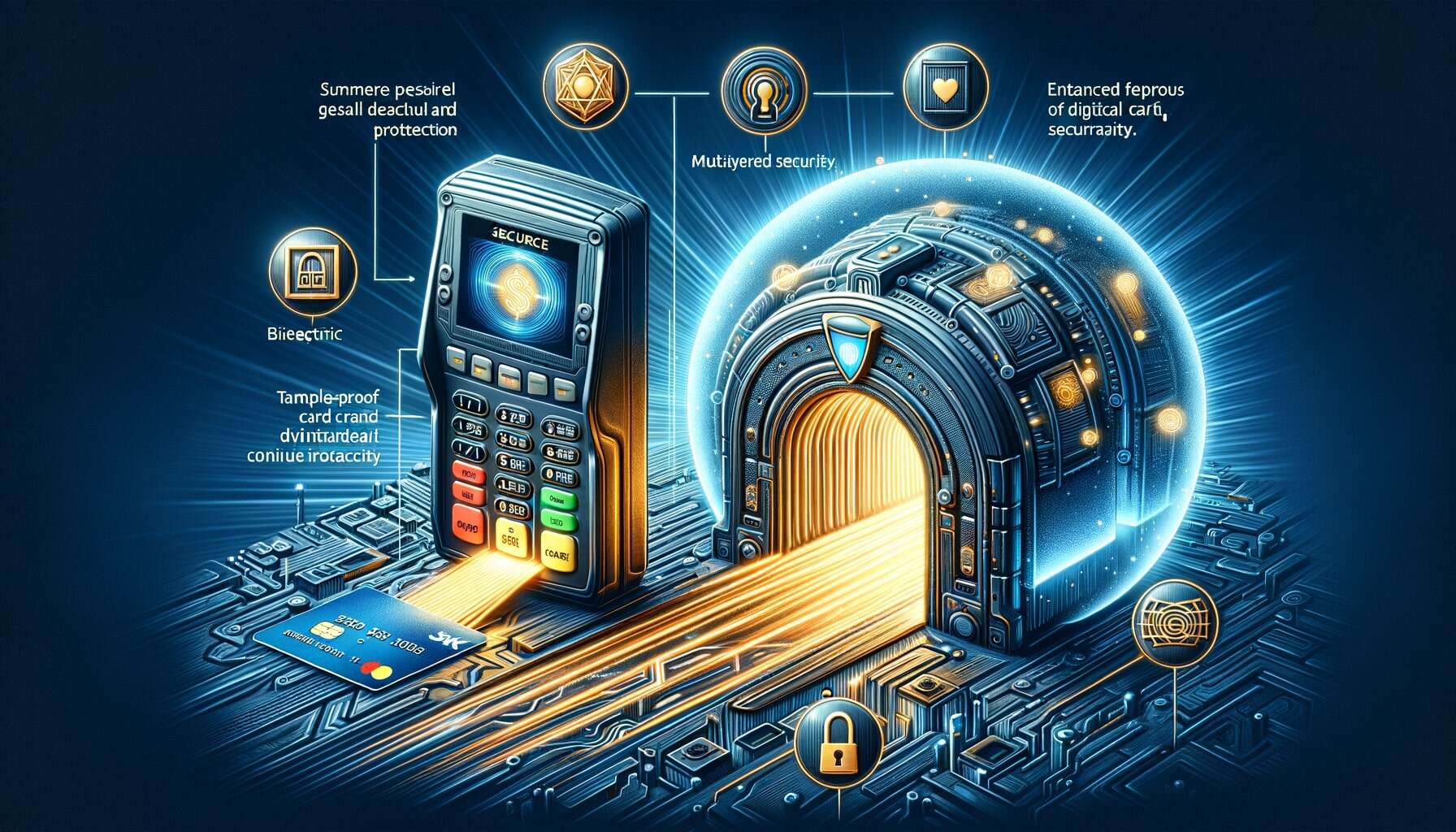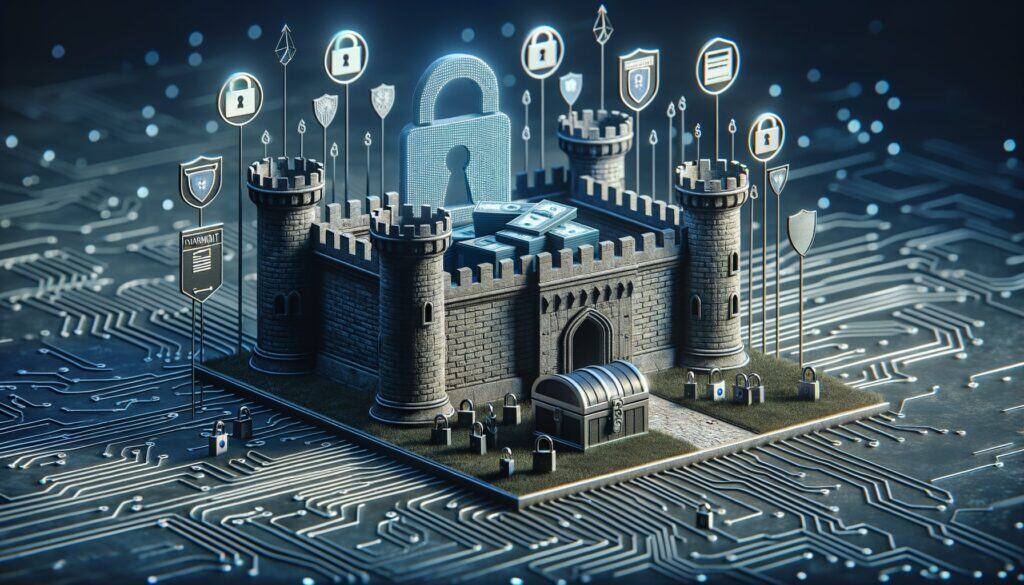
By Mary Miller May 20, 2025
In today’s digital age, protecting your customers’ sensitive information is more important than ever. With the rise of online transactions and the increasing use of credit and debit cards for payments, ensuring the security of your payment processes is crucial to maintaining customer trust and loyalty. One of the key ways to protect your customers is by using secure payment gateways and card readers.
In this comprehensive guide, we will explore the importance of secure payment gateways, how they work, the benefits of using them for your business, choosing the right card reader, implementing secure payment processes, and common FAQs about secure payment gateways and card readers.
Understanding the Importance of Secure Payment Gateways

Secure payment gateways play a vital role in protecting your customers’ payment information from fraud and unauthorized access. They act as a secure bridge between your website or point of sale system and the payment processor, encrypting sensitive data such as credit card numbers, expiration dates, and CVV codes to prevent interception by cybercriminals. By using a secure payment gateway, you can ensure that your customers’ payment information is transmitted and stored securely, reducing the risk of data breaches and identity theft.
What are Secure Payment Gateways and How Do They Work?

Secure payment gateways are online services that facilitate the authorization and processing of electronic payments. When a customer makes a purchase on your website or at your store, the payment gateway encrypts their payment information and securely transmits it to the payment processor for verification.
Once the transaction is approved, the payment gateway sends a confirmation message back to your website or point of sale system, allowing the customer to complete their purchase. Secure payment gateways use encryption protocols such as SSL (Secure Sockets Layer) to protect sensitive data during transmission, ensuring that it cannot be intercepted or tampered with by hackers.
Benefits of Using Secure Payment Gateways for Your Business

There are several benefits to using secure payment gateways for your business. Firstly, they help to build trust with your customers by providing a secure and reliable payment experience. Customers are more likely to make a purchase if they feel confident that their payment information is being handled securely.
Additionally, secure payment gateways can help you comply with industry regulations and standards such as PCI DSS (Payment Card Industry Data Security Standard), which require businesses to implement robust security measures to protect cardholder data. By using a secure payment gateway, you can demonstrate your commitment to data security and protect your business from potential liabilities in the event of a data breach.
Choosing the Right Card Reader for Your Business

In addition to using secure payment gateways, choosing the right card reader is essential for ensuring the security of your payment processes. Card readers are devices that allow you to accept credit and debit card payments in person, whether at a physical store or on the go.
There are several types of card readers available in the market, each with its own features and capabilities. By selecting the right card reader for your business, you can enhance the security of your payment transactions and provide a seamless payment experience for your customers.
Types of Card Readers Available in the Market
There are several types of card readers available in the market, ranging from traditional countertop terminals to mobile card readers that can be used with smartphones and tablets. Some of the most common types of card readers include:
1. Traditional countertop terminals: These are stationary devices that are typically used at checkout counters in retail stores. They can accept both chip and magnetic stripe cards and are connected to a point of sale system or payment gateway via a wired or wireless connection.
2. Mobile card readers: These are compact devices that can be attached to a smartphone or tablet to accept card payments on the go. They are ideal for businesses that operate at events, markets, or other off-site locations where a traditional countertop terminal may not be practical.
3. Virtual terminals: These are online payment processing solutions that allow you to accept card payments through a web browser. Virtual terminals are ideal for businesses that primarily operate online or over the phone and do not have a physical storefront.
4. Contactless card readers: These are devices that can accept payments from contactless cards or mobile wallets such as Apple Pay and Google Pay. Contactless payments are becoming increasingly popular due to their convenience and speed, making contactless card readers a valuable addition to any business.
Factors to Consider When Selecting a Card Reader for Your Business
When selecting a card reader for your business, there are several factors to consider to ensure that you choose the right device for your needs. Some key factors to keep in mind include:
1. Compatibility: Make sure that the card reader is compatible with your existing point of sale system or payment gateway. Check whether it supports the types of cards you want to accept, such as chip and magnetic stripe cards.
2. Security features: Look for card readers that offer advanced security features such as encryption and tokenization to protect cardholder data from unauthorized access. Ensure that the device is PCI DSS compliant to meet industry standards for data security.
3. Ease of use: Choose a card reader that is easy to set up and use, both for your staff and customers. Consider factors such as the size and design of the device, as well as the user interface and functionality.
4. Cost: Compare the cost of different card readers, including any upfront fees, transaction fees, and monthly subscription fees. Consider your budget and the volume of card transactions you expect to process when choosing a device.
By carefully considering these factors and selecting a card reader that meets your business requirements, you can enhance the security of your payment processes and provide a seamless payment experience for your customers.
Implementing Secure Payment Processes in Your Business
Once you have chosen a secure payment gateway and card reader for your business, it is essential to implement best practices for secure payment processing to protect your customers’ sensitive information. By following these best practices and taking steps to ensure data security, you can minimize the risk of data breaches and fraud and build trust with your customers.
Best Practices for Secure Payment Processing
Some best practices for secure payment processing include:
1. Use encryption: Encrypt all sensitive data such as credit card numbers, expiration dates, and CVV codes to protect it from unauthorized access. Ensure that your payment gateway and card reader use encryption protocols such as SSL to secure data during transmission.
2. Implement tokenization: Use tokenization to replace sensitive cardholder data with unique tokens that cannot be used to make unauthorized transactions. Tokenization helps to reduce the risk of data theft and fraud by storing sensitive data securely.
3. Monitor transactions: Regularly monitor your payment transactions for any suspicious activity or unauthorized charges. Set up alerts and notifications to detect potential fraud and take immediate action to investigate and resolve any issues.
4. Update software: Keep your payment gateway and card reader software up to date with the latest security patches and updates. Regularly check for software vulnerabilities and apply patches to protect against potential security threats.
5. Train staff: Provide training to your staff on how to securely process payments and handle sensitive customer information. Educate them on best practices for data security and fraud prevention to minimize the risk of human error or negligence.
By implementing these best practices and taking proactive measures to secure your payment processes, you can protect your customers’ sensitive information and reduce the risk of data breaches and fraud.
Steps to Ensure Data Security When Processing Payments
In addition to following best practices for secure payment processing, there are several steps you can take to ensure data security when processing payments in your business:
1. Secure your network: Use firewalls, antivirus software, and intrusion detection systems to protect your network from cyber threats. Implement strong passwords and multi-factor authentication to prevent unauthorized access to your systems.
2. Secure physical devices: Secure your card reader and other payment devices to prevent tampering or theft. Keep them in a secure location when not in use and regularly inspect them for any signs of tampering or damage.
3. Conduct regular security audits: Perform regular security audits and assessments to identify vulnerabilities in your payment processes and systems. Address any security gaps or weaknesses promptly to prevent potential security breaches.
4. Monitor compliance: Stay up to date with industry regulations and standards such as PCI DSS and GDPR (General Data Protection Regulation) to ensure compliance with data security requirements. Regularly review your security policies and procedures to maintain compliance with relevant regulations.
By following these steps and implementing robust security measures in your business, you can protect your customers’ sensitive information and build trust with them by providing a secure payment experience.
Common FAQs About Secure Payment Gateways and Card Readers
As businesses increasingly rely on secure payment gateways and card readers to process transactions, there are several common questions that arise about their use and functionality. Here are some frequently asked questions about secure payment gateways and card readers:
Q1. What is the difference between a payment gateway and a payment processor?
Answer: A payment gateway is a service that securely transmits payment information between your website or point of sale system and the payment processor. A payment processor is a financial institution that processes credit and debit card transactions on behalf of merchants.
Q2. How do secure payment gateways protect customer data?
Answer: Secure payment gateways use encryption protocols such as SSL to encrypt sensitive data during transmission, preventing it from being intercepted by hackers. They also implement security features such as tokenization to replace sensitive data with unique tokens that cannot be used to make unauthorized transactions.
Q3. What are the benefits of using a card reader for in-person payments?
Answer: Card readers allow businesses to accept credit and debit card payments in person, providing a convenient and secure payment experience for customers. They can help to reduce cash handling and streamline the checkout process, improving efficiency and customer satisfaction.
Q4. How can I ensure the security of my card reader?
Answer: To ensure the security of your card reader, keep it in a secure location when not in use, regularly inspect it for signs of tampering or damage, and update its software with the latest security patches and updates. Follow best practices for secure payment processing to protect customer data during transactions.
Q5. What should I do if I suspect fraudulent activity on my payment gateway or card reader?
Answer: If you suspect fraudulent activity on your payment gateway or card reader, immediately contact your payment processor or financial institution to report the issue. Take steps to investigate the incident, secure your systems, and notify affected customers to prevent further unauthorized transactions.
By addressing these common FAQs and providing clear answers to customers’ questions about secure payment gateways and card readers, you can enhance transparency and trust in your payment processes.
Conclusion
Protecting your customers with secure payment gateways and card readers is essential for maintaining trust and loyalty in today’s digital marketplace. By understanding the importance of secure payment processes, choosing the right card reader, implementing best practices for data security, and addressing common FAQs, you can enhance the security of your payment transactions and provide a seamless payment experience for your customers.
By prioritizing data security and compliance with industry regulations, you can build trust with your customers and protect their sensitive information from fraud and unauthorized access. Invest in secure payment gateways and card readers to safeguard your customers’ payment information and demonstrate your commitment to data security in your business.